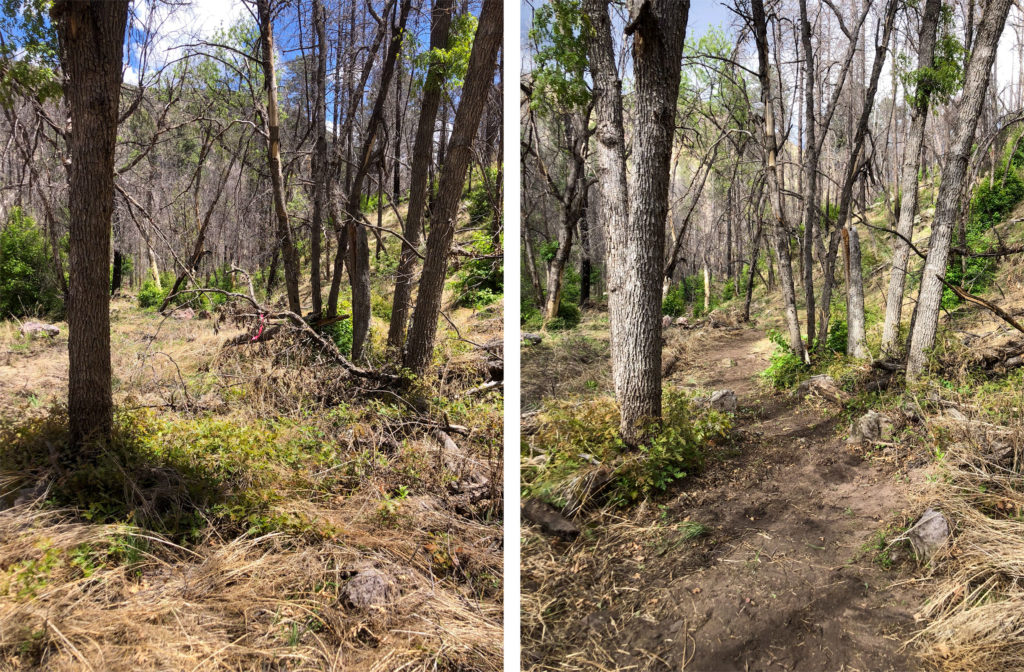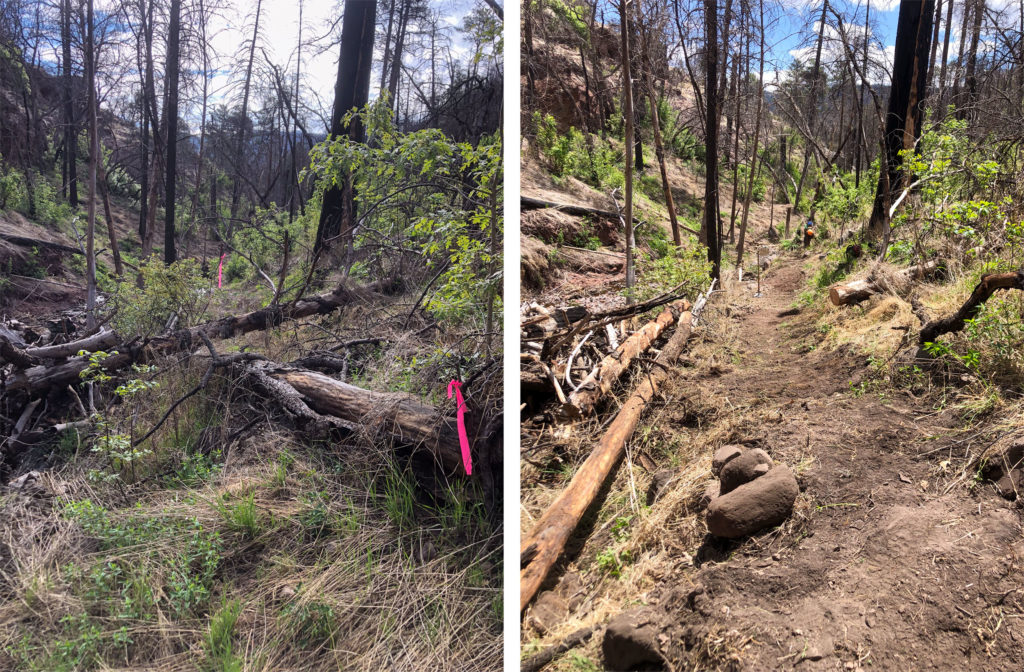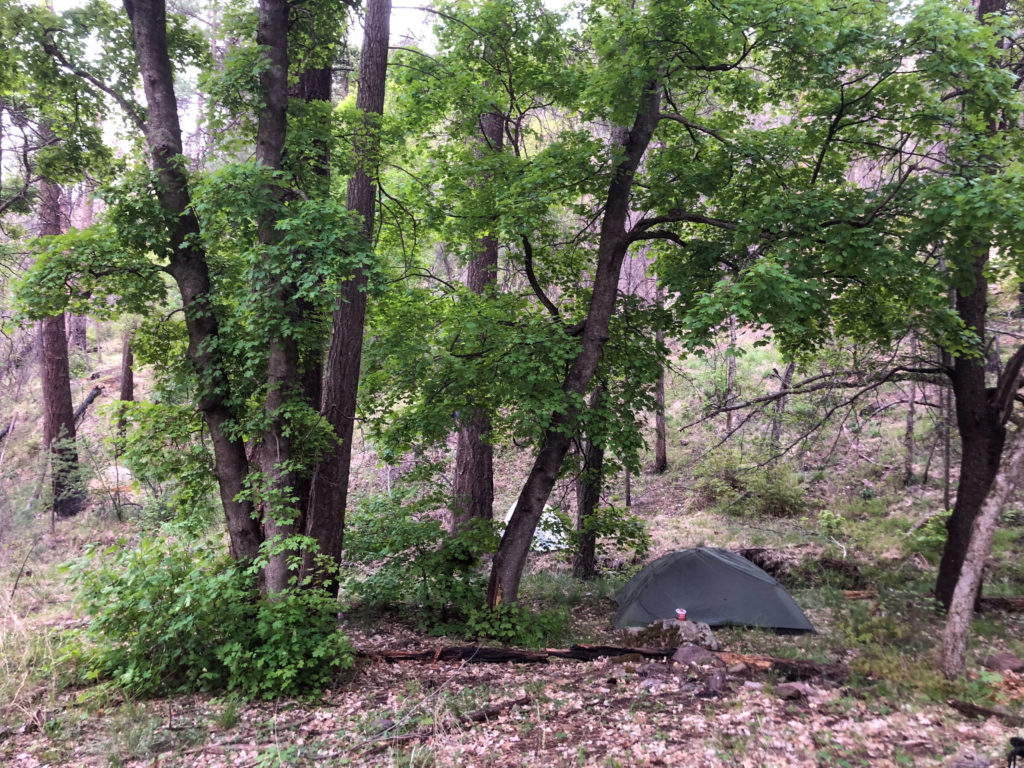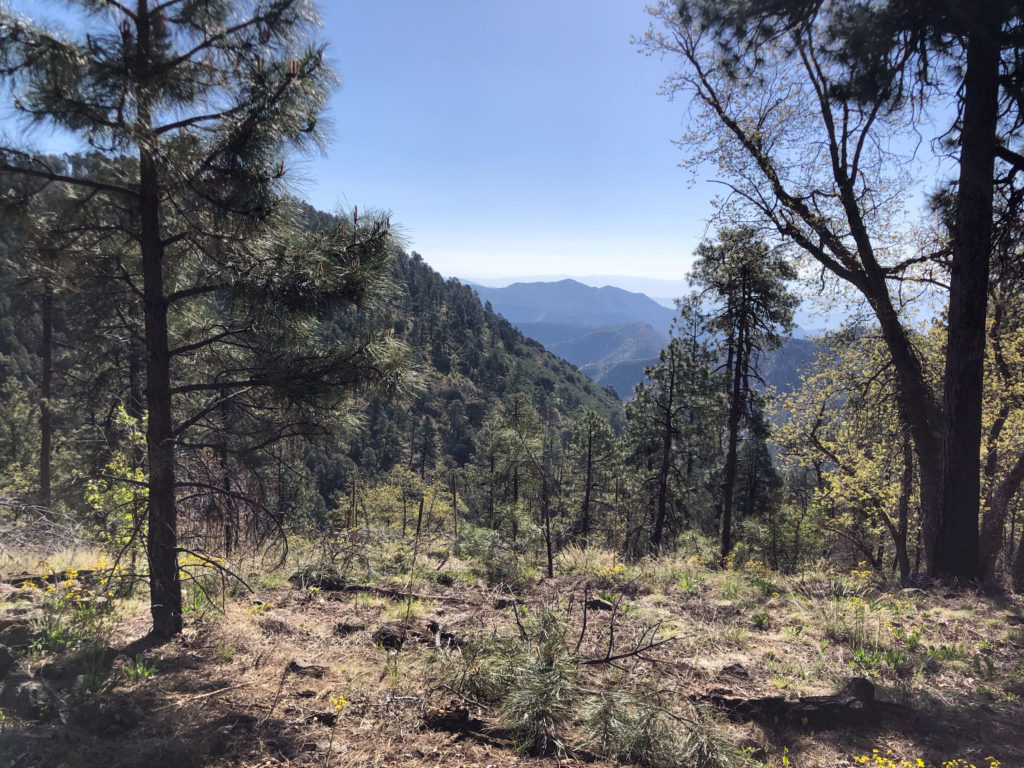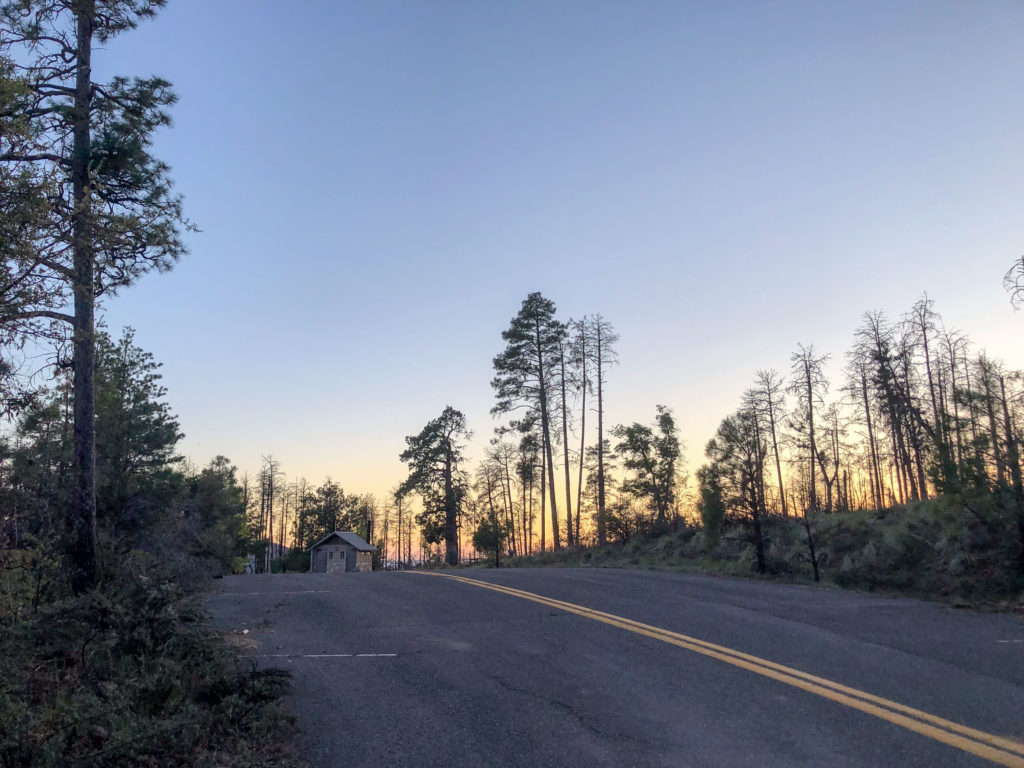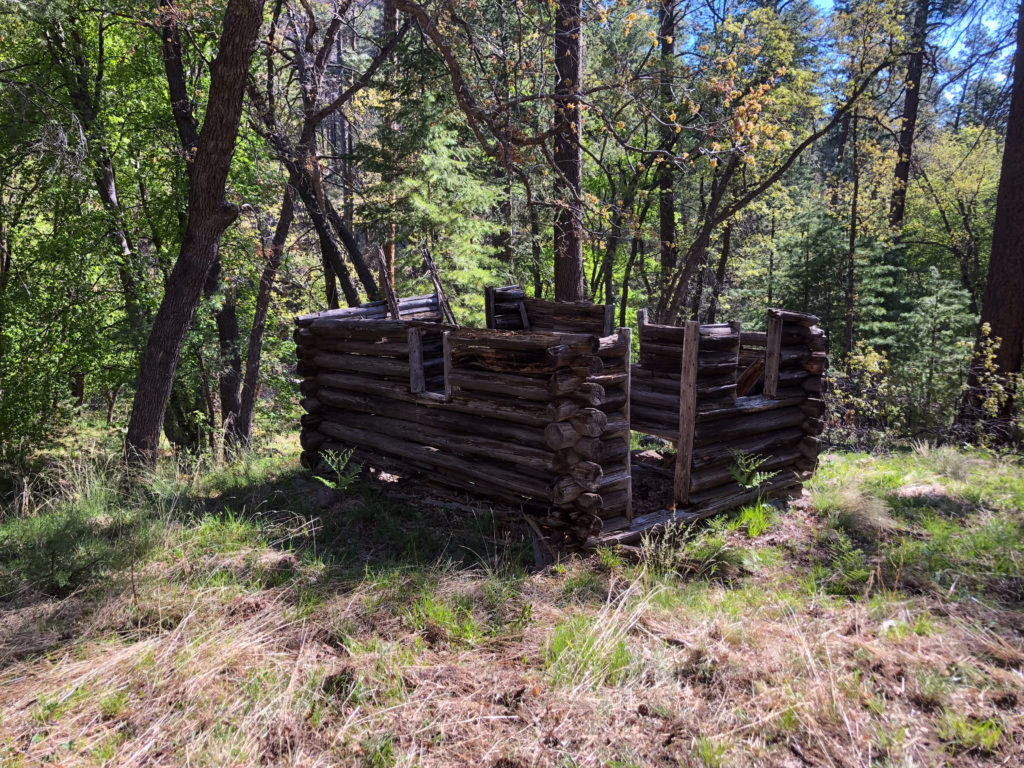
Written by Nico Lorenzen, Wild Stew Field Crew Member.
First off, greetings to all our readers! This is my first WildAZ it Gets post, and I’m thrilled to report about the first of our summer hitches from the Apache-Sitgreaves National Forest. We are tasked with repairing the Strayhorse Canyon Trail #20 which begins along Highway 191 halfway between Morenci and Alpine. The trail has seen better days as the Bringham Fire of 2020 scoured much of the drainage leaving all but the largest trees burned. Since 2020 the underbrush has returned, however the loosening of the soil strata post-fire led to extensive ‘trail creep’ as well as the loss of navigable sections across most of the smaller drainages and chutes that cross the trail.
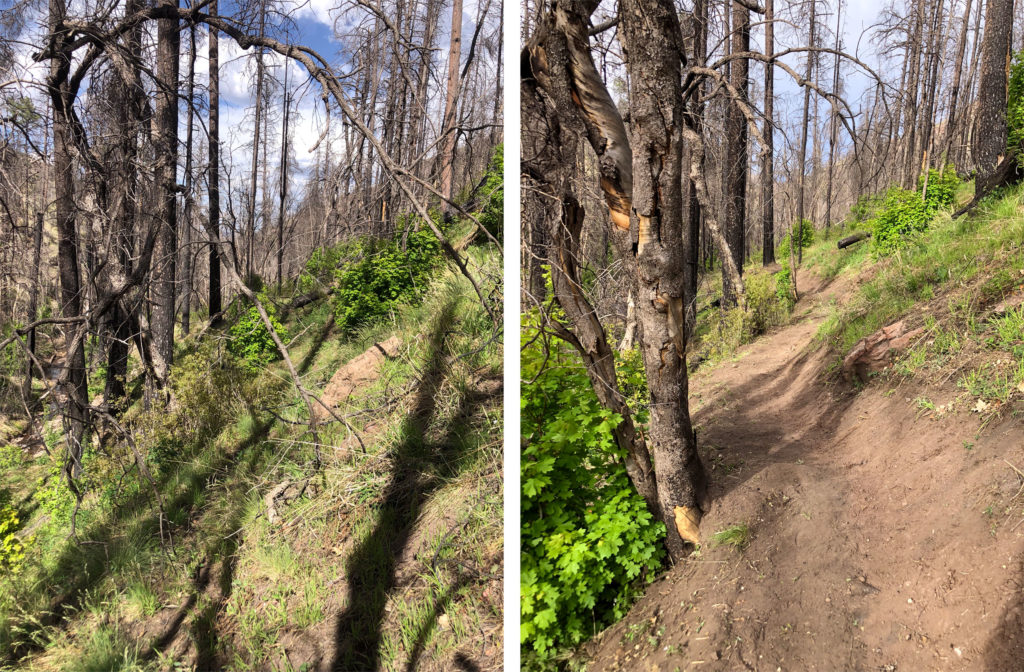
The trail runs off the ridgeline near Rose Peak at 8200’ and down to the canyon bottom following Strayhorse Creek until it merges with the Blue River. To revitalize this trail system we brought to bear nearly our full gamut of trail tools: brushing equipment, treading tools and (my personal favorite) our slew of crosscut saws. With each of us carrying loppers, a handsaw, a tread tool, and a component of our crosscut equipment we descended unto the trail for eight days of varied work punctuated by the variable weather of the alpine region. The crew first set its sights on the trailhead which was cleared up and marked with cairns. Despite beginning on a rocky set of ledges overlooked by ponderosa and Douglas fir, the trail corridor became dominated by scrub oak and an incredible array of maple trees after going down a few thousand feet and winding its way through switchbacks before hitting the first hint of water at Strayhorse Spring near an old log cabin.
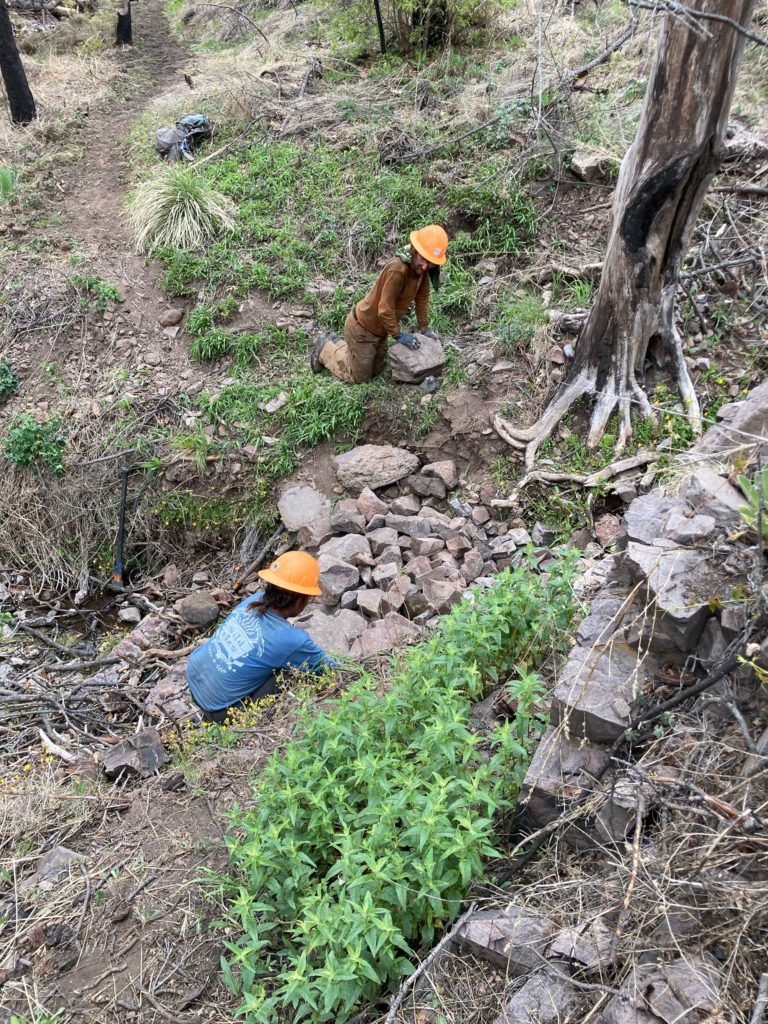
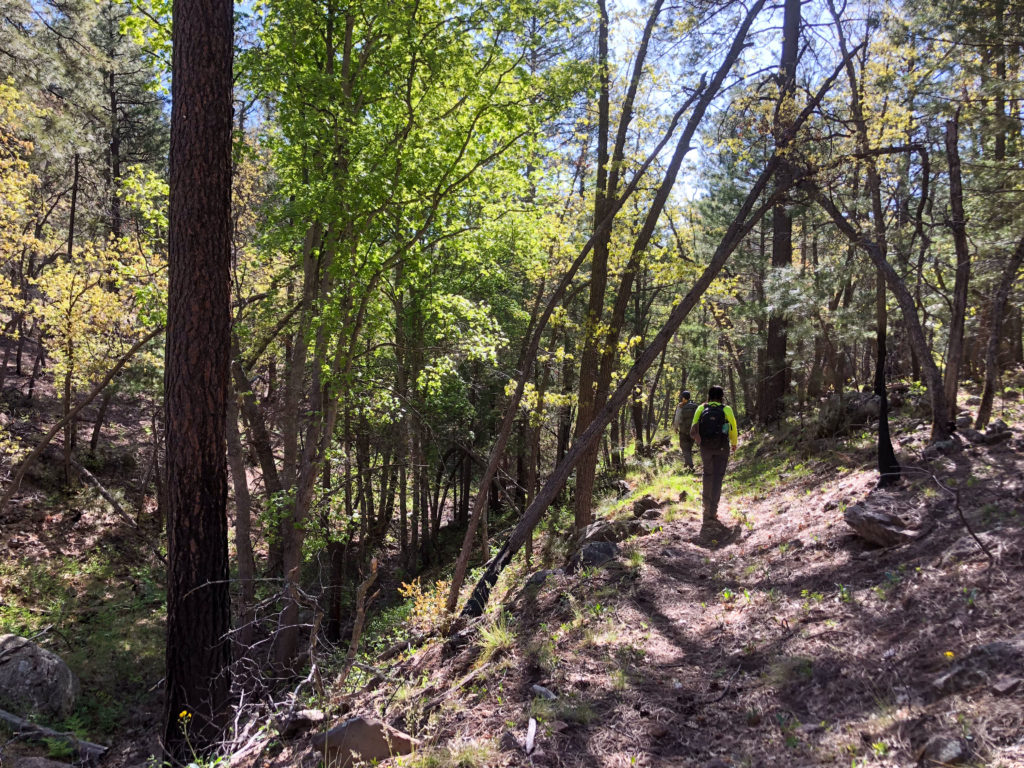
As is often the case with trail work, there is a push and pull of time versus detail. With many miles of trail restoration as our target we all had to accommodate the time restrictions imparted by the need to cover such a distance while maintaining the quality that we as Wild Arizona intend to leave on any trail we work with. The crew adapted to this challenge swiftly; consistently morphing from our ‘tread train’ lineup for cutting proper benched tread to spreading out to hit trouble spots or pairing off to tackle the puzzles of root wads, large groupings of fallen trees, or the building of rock retention structures as the work demanded. Over the course of this hitch, we covered 3 miles, cut or moved over 100 trees from the trail, repaired or rebuilt over a dozen drainage crossings, and rebenched/rerouted multiple sections of tread as needed.
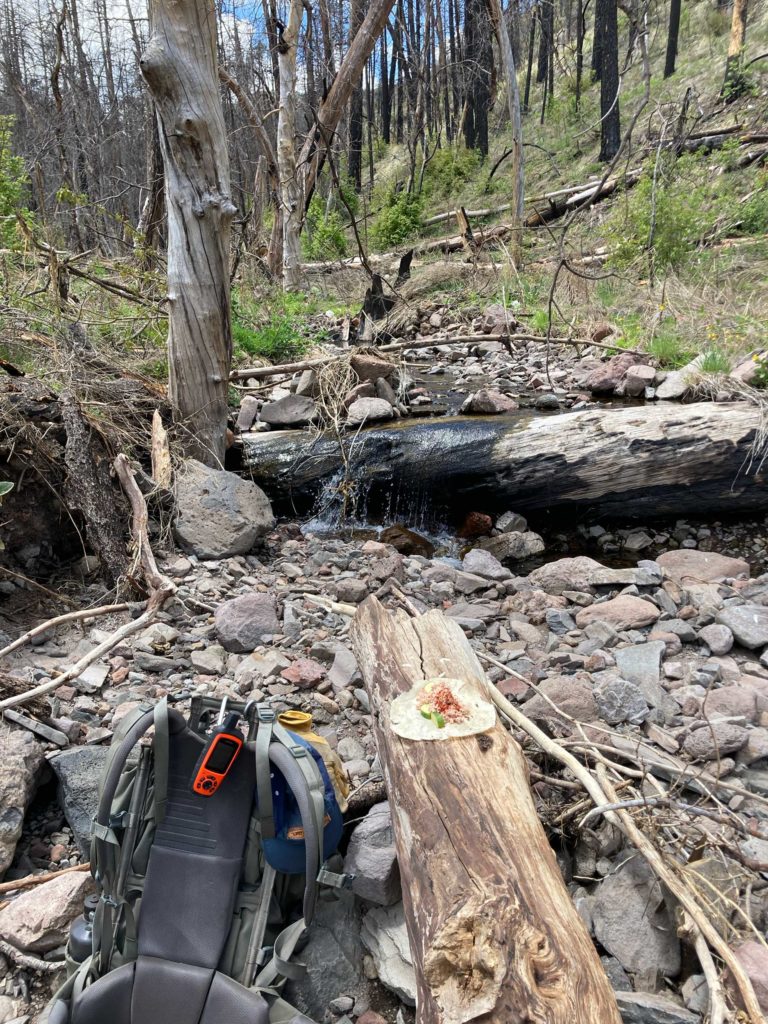
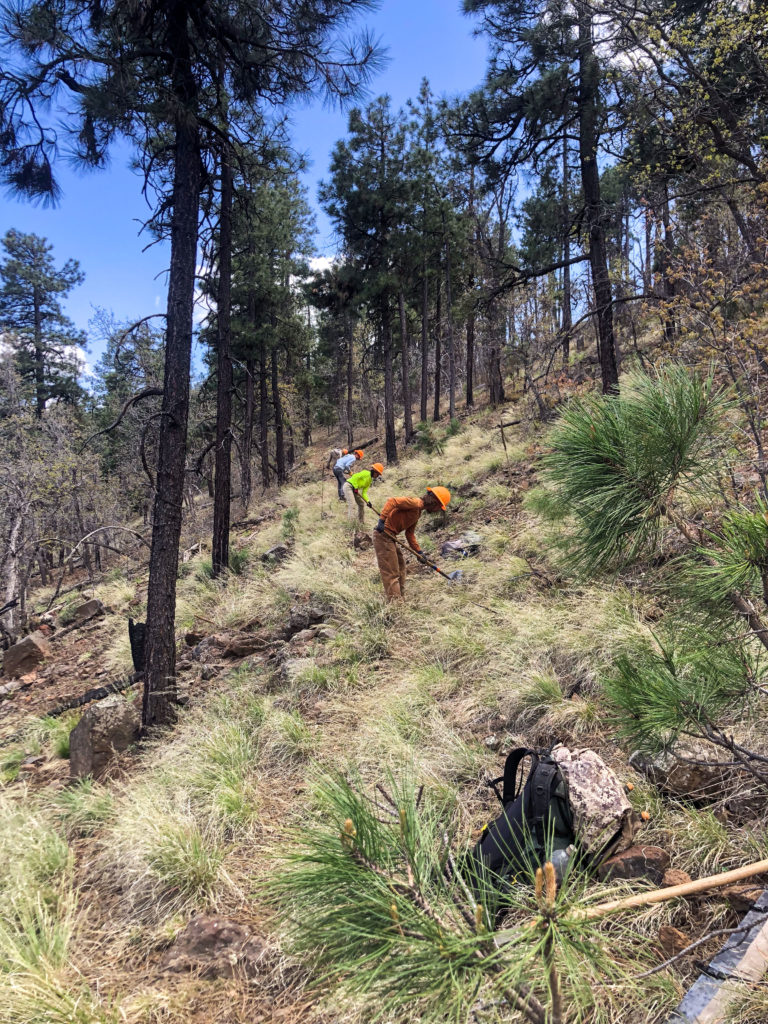
Upon reaching the bottom of the canyon we were met with severe loss of many sections of the trail due to rapid erosion, but thanks to our partners with the Apache-Sitgreaves National Forest we were able to follow a flag line through the most harrowing areas. Despite these grim sounding trail conditions, the hitch was one filled with wildflowers, a kaleidoscopic array of bird calls, and a few rainstorms for good measure. Should you be looking for an upcoming hiking trip off the beaten path, try using the Strayhorse Canyon trail to get to the Blue Range, and hold out hope that you’ll hear the calls of the reintroduced Mexican Gray Wolves in the area. We certainly will be when we return here on our upcoming hitch. As always thanks for reading and keep it wild!
